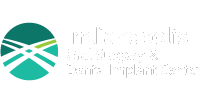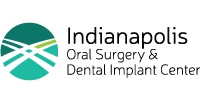Teeth In A Day – Reality Or Myth
Dental implants have many benefits. One of the most important is replacing a broken or damaged tooth in the front area that can no longer be restored. In this case, teeth in a day offers a highly aesthetic and efficient solution as it avoids the need to prepare the adjacent teeth in just one sitting. However, the traditional procedure can take up to one year as it implies three different steps:
1. Removal of the existing tooth or root. The extraction socket is left to heal for four to six months before a dental implant is placed. During this period, the body will grow new bone inside the socket.
2. The implant is surgically inserted into the jaw bone. A variable amount of healing time is required for osseointegration (3 to 6 months). Osseointegration is a biologic process where the implant forms an intimate bond to the bone.
3. After the healing time, a dental crown is attached to the implant.
Teeth In A Day: Immediate Placement And Loading
The loss of tooth in the esthetic area is often a traumatic experience for the patient. Patients may suffer real or perceived detrimental effects following the loss of one or more teeth. Dental implant offers the most cost-effective and long-term solution for replacement of missing teeth with high average life expectancy, providing the patient with the best sense of security and well-being. Recently, immediate implant placement after extraction of tooth with early loading has become more common. The advantages of this procedure include
- Fewer surgical interventions,
- Reduction in overall treatment time,
- Reduced soft and hard tissue loss, and
- Psychological satisfaction to the patient.
Who Is A Candidate For Immediate Tooth Replacement With Implants ?
Immediate placement is not appropriate for all patients and cases and the screening process should be extremely thorough. The ideal candidate is someone who is in good dental and general health. Some factors can also negatively affect tooth implants:
- Smoking
- Any conditions that affect the immune system or reduce the body’s ability to heal
- Some drugs such as bisphosphonates as these drugs increase the risk of bone death after surgery
- Bruxism or teeth grinding and clenching
Patients who choose this approach must also be committed to good oral hygiene. Furthermore, not overloading the implant crown is another factor that needs to be reinforced with patients when loading an implant immediately after placement.
Patients with enough bone quantity and quality are great candidates for immediate placement and loading because of anticipated implant initial stability assuming that they would be compliant with postoperative instructions.
Steps For Getting Teeth In A Day
There are a number of issues and steps to consider:
1. Consultation And Planning
Dental implant surgery has to be meticulously planned; when you opt for immediate implant placement, careful planning and experience are prerequisites for success.
Your Indianapolis Oral Surgeon Dr. Falender will need to know your complete dental and medical history before carrying out various diagnostic tests, such as dental x-rays and a CT scan.
The data from these tests must be analyzed to assess the quality of the bone that will be surrounding the tooth implant. When an implant is placed into a recent extraction site, many doctors prefer to graft bone in the alveolar socket to create a bony base for the implant.
There should also be enough gum tissue to surround the implant and crown as this will affect aesthetics; the implant crown should look as if it is emerging naturally from the gums. Gum tissue can be grafted from another site in the mouth if necessary.
At this stage, Dr. Falender from Indianapolis Oral Surgery & Dental Implant Center, Indianapolis will also determine the best position for the implant and will choose the correct size.
2. Removing The Existing Tooth
It is quite critical that your broken tooth is removed very carefully so that the tooth socket is not damaged.
If any bone from the walls of the socket is damaged or lost, it could lead to unsightly gum recession and/or a poor prognosis; in this case, many practitioners would prefer to end the procedure (and continue with the traditional approach) rather than risk a poor result.
3. Implant Placement
Using this technique, the implant fixture is placed in the bone right after the tooth extraction. It is vital to place the implant so that it is stable and non-movable in the bone. This stability is referred to as the primary stability of the implant.
Latest research suggests that the primary stability of the implant in bone is a more important determinant of the success of implant integration, rather than a certain period of healing time.
The tooth socket of an upper front tooth is cone-shaped. To achieve primary stability, the implant has to penetrate the apex of the socket (or the end point) and affix to the bone in this area. Additionally, a bone graft can be placed inside the tooth socket.
It is very important to select the right-sized implant for the situation and make sure that it is placed in exactly the right position.
4. Crown Placement
The crown will be attached to the implant in one of two ways:
- Directly : The crown and the abutment are one piece and a lag-screw traverses both to secure the one-piece structure to the internal thread on the implant.
- Indirectly : First, the abutment is attached to the implant and the crown will be cemented to the abutment. In this variation, the abutment can be used to create a change of angulation for the crown to emerge through the gum tissue with a more natural appearance.
Regardless of the variation used, it is critical that the newly attached crown is free from biting forces, which could displace the implant. The crown is usually a temporary crown, made of a composite or acrylic resin, which can easily be modified to ensure that it is both functional and cosmetic.
Once the implant is fully integrated with the bone, the temporary crown can be removed and replaced with a permanent one.
5. Care And Maintenance
Immediate implant placement and loading requires higher patient compliance. There are 3 key factors that patients have to consider:
- Overloading : It is vital that the implant restoration should not be overloaded as even micro-movement during the first two months of placement can result in non-fusion and failure of the implant to attach to the surrounding bone. Avoid biting on extremely hard pieces of food and contact your doctor if you notice any signs of involuntary teeth grinding and clenching.
- Oral Hygiene : It is critical to take good care of the area around the implant for the first couple of months after the surgery in order to prevent infection. If maintaining this level of care could be a problem, then you should consider traditional tooth implants that use a two stage technique.
- Smoking : You may not be suitable for this type of treatment if you are a heavy smoker and have problems quitting smoking and tobacco products.
Benefits And Risks Of Same Day Dental Implants
Benefits
Benefits of immediate tooth replacement with implant restorations include:
- A highly durable and stable restoration
- Full aesthetic restoration
- Minimization of the tooth movement associated with tooth loss
- Reduction in the bone deterioration associated with tooth loss
- Confidence
- Less waiting time
The best news is depending on your specific requirements and case, you could be pleasantly surprised at the cost effectiveness of your immediate dental implant treatment.
In the past, it was challenging to replace a patient’s loss tooth immediately. Patients had to wait for a period of 3 to 6 months and suffer the inconvenience of wearing temporary dentures during their healing period.
Now, thanks to modern state-of-the-art surgical techniques and tooth implant technology, our patients can have permanently fixed tooth or teeth fitted within a few days of the surgery.
It is important that you know when you lose a tooth, it is highly advisable you replace it as soon as possible. This is because since your loss tooth no longer supports the jawbone underneath, over time it could result in jawbone deterioration.
Depending on the cumulative deterioration of your jawbone, this can in the long run undermine the strength and position of your remaining teeth. So, even if you’ve lost a single tooth, to avoid a long term “domino effect” it is best to replace your missing tooth or teeth as soon as possible.
Risks and Drawbacks
Same-day dental implant treatments cannot create a shortcut that will bypass the bone-to-implant integration process. This must still take place and cannot be rushed because the body needs time to produce new bone cells that will firmly hold the implant in place. Patient compliance is vital to ensure the tooth implants do not move during a healing period, which may be anywhere between three and six months. During this time, it is often necessary for patients to stick to a softer diet, avoiding particularly hard or crunchy foods, such as carrots or almonds. This can last 6 to 8 weeks after surgery. Failure to adhere to a softer diet may result in the implants moving, negatively impacting integration and increasing the risk of treatment failure.
Often the restorative dental implants that are attached immediately after surgery are simply temporary, remaining in place until integration is completed, after which they can be replaced with more permanent implant-supported restorations. These immediate restorations are usually fabricated before surgery takes place and may not look as highly aesthetic as the final restorations.
While this treatment isn’t for everybody, the potential emotional benefits for patients receiving same-day dental implants shouldn’t be discounted. However, treatment is often extremely technique-sensitive and extensive skill is needed to ensure success.
About Your Indianapolis, IN Oral Surgeon
We look forward to providing families with exceptional care and advanced treatment options. To schedule an appointment with Dr. Falender contact our Indianapolis, IN, dental office today by calling (317) 790-2555. Our office welcomes patients in and around Indianapolis, IN, including Fishers, Lawrence, Greenfield, and the surrounding Southern Indianapolis communities.

